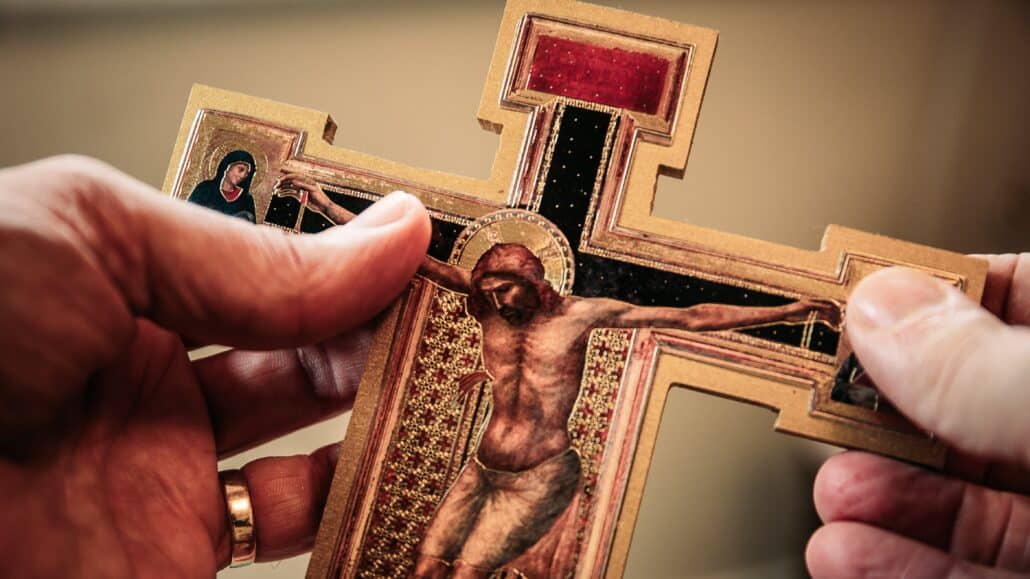We are all familiar with the ways in which Jesus used imagery to help us understand who he was. He described himself as the shepherd and we are his sheep. Of course, we know we are not really sheep, but we understand the loving care of a shepherd for his flock. That’s just one example. Images help us understand who Jesus is in our own lives. These images do not require a degree in theology to grasp the nature of Christ. There are tomes written by great theologians and philosophers explaining Scripture. But for all except a few, they would not communicate to us as much as the simple images God revealed to us in Scripture.
But what about the Old Testament, prior to Jesus? Amazingly, even the Old Testament writers used imagery that, in a sense, gave flesh to God so that we can understand him better.
For example, the prophet Hosea, who lived 700 years before Jesus, wrote the most beautiful and helpful language in describing God’s love for his wayward people. Hosea himself discovered how his own wife was unfaithful to him, and yet he loved her with all of his heart. And Hosea used that same situation in describing God’s love for his unfaithful people. In fact, in Chapter 11, Hosea describes God as “calling my son” (Israel). God speaks of Israel as a “child” whom he cannot stop loving.
Hosea also describes God as “teaching his child to walk.” What a wonderful image! We all know how carefully parents assist their little ones, holding their hands as they struggle with their first steps. Parents do not let their children fall. God would not let us fall, either. Hosea also pictures God “stooping to feed my child.” Imagine God stooping from heaven to care for us! Who cannot relate to that?
In all of these images, God helps us understand his love for us. Though God is spirit and does not have emotions as you and I do, it is a gift for us that God uses human language and human experiences to which we can relate. We say that God is a mystery beyond our understanding. Yet hasn’t he made himself so easy to understand?
In the Hands of God
We know that God, our creator, is a pure and infinite spirit. But Scripture also attributes human characteristics to him. In his wisdom, God wanted to be real for his children. He wanted to be someone we could hold on to. In God’s own words to us, he has described himself in physical images. For example, Jesus described God like a “hen who gathers her chicks safely under her wing” (Lk 13:34). It seems significant, too, that there are 122 references to the hands of God.
We understand how our own hands are so important in expressing our love and care for one another—a touch, a protective hold. That image also tells us so much about God. In the creation story, God creates the heavens and earth by an act of will. However, when it comes to the gift of life, Genesis says, “Let us make human beings in our image and likeness” (1:28).
The image of us being held in the hands of God is such a help in understanding how close God is to us. We even think of God as picking us up after a fall. Of course, Jesus Christ, God in the flesh, used his hands to touch, to hold, and to heal. Jesus “lays his hands” on a leper (Mk 1:41). To touch a leper would be unthinkable, making Jesus ritually unclean and unable to enter the temple. But that is exactly what he did. The leper was healed.
Put simply, we are all in God’s hands. This should remind us that God is not distant from us. He is not just with us, but actually within us.
Remember Jesus’ description of the Prodigal Son? The young man’s father saw him returning from his foolish venture into society. He was returning home with all his dreams smashed to bits. Luke writes, “When he was still afar off, his father caught sight of him and was filled with compassion. He ran to his son, embraced [threw his arms around] him and kissed him” (15:20).
Thus, when we pray for our loved ones, there is that beautiful way of telling God, “Lord, I give my loved ones to you. Take them and hold them safely in your hands.” Even for ourselves, we can say, “Lord, I give myself into your hands.”
First-time mothers have told me that when they are home from the hospital with their newborns, they can’t keep their hands off them. They can only gaze at the miracle of new life in their arms. Now imagine how God looks upon us as sons and daughters. Imagine God speaking to us, “You are mine. I will do anything for you. I want you with me for all eternity.”
That is our loving God speaking.









4 thoughts on “Humanizing God”
Beautifully said. That spark (or DNA) of the Divine is in us. To know we are all connected; the awareness of it illuminates the significance of our lives.
As the care giver for my wife, I found this line had special significance:
“Thus, when we pray for our loved ones, there is that beautiful way of telling God, “Lord, I give my loved ones to you. Take them and hold them safely in your hands.” ”
Peace my friends
“He’s got the whole world in His Hands”
A beautiful American Spiritual for all people for all time. In 2017 my daughter and I did some missionary work at a very special school in the slums of Kibeira, Kenya. The children took such delight in this song underscoring our offer of hope for a brighter future in the Name of the LORD. Amen 🙏
Yes, indeed, he’s got the whole world in His Hands.
Peace and All Good
I John 1:1 “That which was from the beginning, which we have heard, which we have seen with our eyes, which we have looked at and our hands have touched”–that is our dear Lord, Jesus. I take his body and blood–the host–into my hands to receive Him, to touch Him. Yes, I do hear Him, I look at the crucifix and then I receive Him–touching Him with my hands–knowing He is my Lord and Savior. Hands that touch are hands most willing to serve.